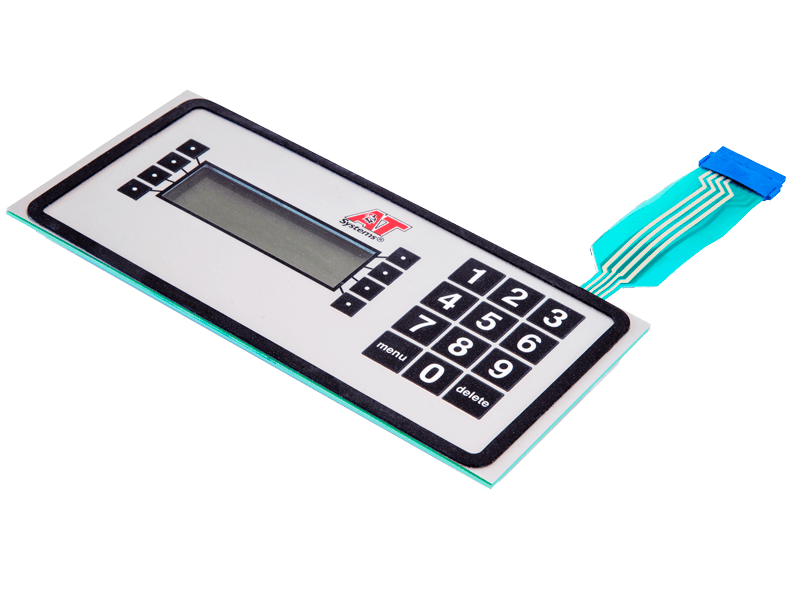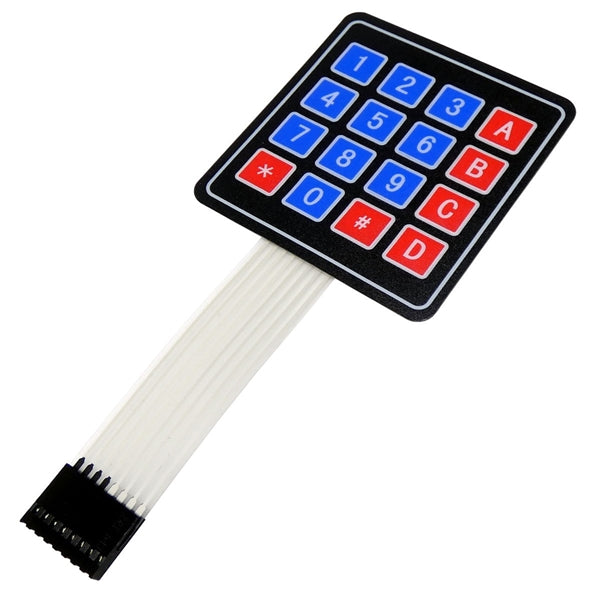If longevity matters, sourcing from a seasoned membrane switch manufacturer is crucial.
If longevity matters, sourcing from a seasoned membrane switch manufacturer is crucial.
Blog Article
All Regarding Membrane Layer Switch: Recognizing Its Layout and Functionality
When you think concerning the control interfaces in modern-day devices, membrane buttons usually come to mind. These parts are greater than simply buttons; they mix design and capability flawlessly. Comprehending just how they function and what makes them efficient can alter your viewpoint on day-to-day electronic devices. There are nuances to their layout and performance that you might not be conscious of. Allow's explore what collections membrane switches in addition to various other control systems.
What Are Membrane Layer Buttons?

Membrane layer switches can likewise be personalized pertaining to shape, size, and graphics, allowing manufacturers to produce one-of-a-kind user interfaces customized to details items. In general, membrane layer buttons play a considerable role in boosting customer experience across a large array of applications.
How Membrane Layer Switches Job
When you push a key on a membrane switch, it activates a straightforward yet reliable device. The leading layer, usually made of versatile material, pushes down onto a conductive layer underneath it. This activity bridges the gap between conductive traces, finishing an electric circuit. As soon as the circuit shuts, it sends out a signal to the gadget's controller, which analyzes your input.
You'll observe that the tactile responses differs based upon the button style, offering either a soft click or an extra obvious feedback. Once you launch the trick, the membrane layer returns to its initial position, resuming the circuit and quiting the signal. This process occurs practically immediately, guaranteeing a responsive user experience.
Membrane buttons are popular due to their sturdiness and resistance to dirt and dampness, making them excellent for various applications, from household home appliances to medical tools. Comprehending this operation assists you value their prevalent use.
Trick Components of Membrane Layer Buttons
Comprehending the key elements of membrane layer switches is essential for comprehending their capability and layout. At the core, you'll locate the visuals overlay, which supplies the aesthetic interface for users. Under that, there's a spacer layer that separates the circuit layers, making sure that they don't make contact until pushed. The circuit layer is where the magic takes place; it includes conductive traces that complete the circuit when you press the switch. An additional necessary element is the adhesive backing, enabling the button to stick to surfaces safely. Ultimately, the protective layer shields against ecological variables and wear, prolonging the switch's life expectancy. Each part plays a substantial function in ensuring trusted performance and customer interaction. By comprehending these parts, you'll get insight right into just how membrane layer switches run and their value in various applications.
Products Utilized in Membrane Layer Switch Over Design
The efficiency and toughness of membrane layer changes greatly depend on the products used in their style. You usually experience polyester and polycarbonate as primary substratums as a result of their outstanding stamina and flexibility. These materials stand up to scrapes and chemicals, making them ideal for demanding environments.
The conductive layers commonly utilize silver or carbon, selected for their reliability and conductivity. membrane switch manufacturer. Silver gives superior performance, while carbon is a cost-effective alternative. For the overlay, you may think about a matte or glossy coating, relying on your visual demands and user experience
Make certain to select adhesives that stand up to environmental elements like temperature and moisture. Selecting the appropriate materials will certainly ensure your membrane layer button stands the test of time.
Design Considerations for Membrane Buttons
While designing membrane buttons, it's crucial to take right into account numerous elements that influence their performance and individual experience. Begin by concentrating on the layout and switch dimension; make certain they're instinctive and very easy to navigate. Think about the responsive responses you wish to supply-- will individuals need a recognizable click or a softer touch? Additionally, consider the materials you'll utilize, as they'll affect sturdiness and appearances.
Confirm your design suits environmental elements, like wetness or temperature variations, which could influence performance. By carefully considering these elements, you'll develop a membrane layer button that improves functionality and contentment.
Applications of Membrane Switches
Membrane switches are versatile parts found in various applications, from industrial tools to customer electronic devices. You'll see their impact in equipments that call for long lasting interfaces and in devices that gain from smooth layouts. Understanding these applications aids you appreciate the capability and usefulness of membrane switches in daily modern technology.
Industrial Equipment Usage
When you're looking to enhance the functionality of commercial tools, membrane buttons provide a trusted solution that incorporates sturdiness with easy to use layout. These switches are ideal for extreme environments, giving resistance to dirt, wetness, and chemicals. Accept membrane buttons to simplify your procedures and boost total efficiency.
Customer Electronics Combination
In the domain name of customer electronic devices, membrane layer switches play a necessary function in improving user interaction and gadget capability. Membrane layer switches likewise guarantee resilience and resistance to dirt and dampness, extending the life-span of your electronics. By picking membrane layer buttons, you improve not just the capability however likewise the design of your devices, making everyday interactions smooth and satisfying.
Benefits and Drawbacks of Membrane Layer Switches
While membrane layer switches provide a variety of benefits, they also come with some disadvantages that you need to think about. One substantial advantage is their portable style, making them suitable for space-constrained applications. They're additionally economical, giving a long lasting solution with a low manufacturing cost. Furthermore, their smooth surface is easy to clean, boosting health in environments like health centers.

Nonetheless, there are downsides. Membrane layer switches can have a much shorter life expectancy compared to mechanical buttons, specifically under heavy use. They can also be much less tactile, which might impact customer responses check out here throughout operation. If harmed, repairing them can be tough and usually calls for full replacement. Ultimately, their level of sensitivity to severe temperature levels and environmental conditions may limit their performance in specific settings. Balancing these advantages and disadvantages will help you determine if membrane switches are the best suitable for your job.
Often Asked Questions
How Much Time Do Membrane Layer Changes Normally Last?
Membrane switches over generally last in between 5 to 10 years, Learn More depending upon use and ecological problems. You'll desire to evaluate variables like wear, exposure to moisture, and temperature variations to evaluate their longevity successfully.
Can Membrane Switches Over Be Customized for Particular Designs?
Yes, you can tailor membrane switches to fit certain styles (membrane switch manufacturer). You'll have the flexibility to choose colors, forms, and formats that match your project's demands, ensuring they mix flawlessly with your overall visual
What Is the Expense Range for Membrane Change Manufacturing?
The price array for membrane button production normally falls in between $1 and $10 each, relying on variables like design complexity, quantity, and products. You can get quotes from suppliers to locate the very best option.

Are Membrane Switches Over Waterproof or Immune?
Membrane layer buttons can be created to be waterproof or immune, depending upon products utilized and construction techniques. If you require them for wet atmospheres, assure you define those needs throughout the layout process.
Just How Do Membrane Layer Changes Compare to Traditional Switches?
Membrane buttons are typically thinner and much more adaptable than conventional switches, using a streamlined design. They're typically simpler to clean up and integrate, yet may not supply the tactile responses you're utilized to with mechanical choices.
Verdict

Report this page